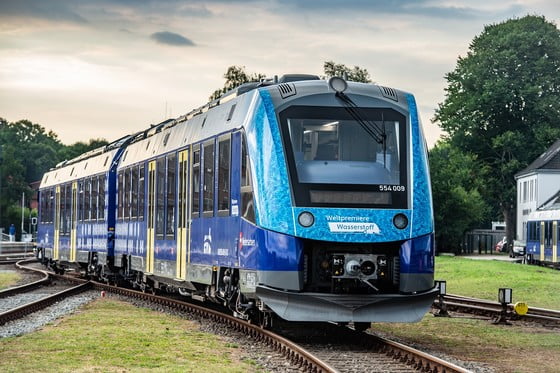In an exclusive interview, the editor spoke to Alan Zhao, New Power Director – Africa & Middle East for Cummins Inc. about its advances in the hydrogen economy.
FROM being a traditional builder of diesel engines used to power applications in transportation, off-road, mining, construction and standby and permanent power generation, Cummins has over the past few years been working to embrace the power of hydrogen, through acquisitions, partnerships and extensive R&D.
These factors combined have resulted in a number of technical innovations which seem to contradict the oft held belief that harnessing the power of the earth’s most abundant element, Hydrogen (H2) is still something of a pipedream.
While the energy density of H2 eclipses that of fossil fuels such as petrol, diesel and natural gas it has been notoriously difficult to obtain, handle, store and exploit, requiring about six times more energy to extract than it provides as opposed to fossil fuels – the reverse – of around 1:3 – coal wins hands down with an energy ratio 1:300!
Fuel cells and ICE
Against its seeming non-starter name tag, various companies have experimented with either fuel cells or ICE (internal combustion engines) to turn extracted H2 into power at the wheels. Cummins have done both.
As far back as 2015, Hydrogenics – now part of Cummins – partnered with Alstom to produce the first hydrogen powered train – known as iLint – in Germany.
Combined development resulted in a train that uses fuel cells to power a 150 seat train that tops 140km/h and has a range of up to 1 000km on one hydrogen tank, without the connection to an overhead pantograph, emitting only water from its fuel cell which produces electricity to drive the train’s electric motors.
Since 2018, two iLints have been operating in commercial service in Germany and interest from other German and European operators has seen their numbers grow to 40+ mainly on non-electrified lines, previously the domain of diesel locos.
Cummins dominance in the ICE industrial market has resulted in a range of engines that share a common platform – being able to run on diesel, compressed natural gas (CNG) or hydrogen. From the cylinder head gasket down – typically: block, crank, pistons etc. these variants share the same components and it is only the cylinder heads, induction and exhaust systems that differ, making manufacturing more efficient, reducing parts inventories, commonality in maintenance regimes and ultimately a price competitive offering.
Unlike the compression- ignition process found in diesel engines, CNG and H2 powered engines require spark ignition, similar to regular petrol engine vehicles. Other areas of difference between CNG and H2 engines involve detailed cylinder head design, direct injection and induction systems and in the case of H2, exhaust gas treatment.
So with these similarities, you might not know that a vehicle is designed for H2, but its fuel tank would be a dead give-away as H2 vehicles utilise a carbon fibre tank, manufactured by NPROXX in The Netherlands, a Cummins JV partner. The use of carbon fibre overcomes the corrosion issues found between H2 and steel, and NPROXX have perfected techniques to produce fuel tanks that cater for the 350 – 700 bar pressures required for CNG and H2 operation.
The joint venture will provide customers with both hydrogen and CNG products for both highway and rail applications.
Hydrogen production
Cummins has been part of many of the world’s hydrogen “firsts.” This includes powering the world’s largest – a 20MW PEM (Proton Exchange Membrane) hydro powered electrolyser in operation in Bécancour, Canada; the world’s first megawatt-scale demonstration plant for storing wind energy in the natural gas grid in Windgas Falkenhagen, Germany; the world’s first hydrogen-powered passenger train in pilot operation across Europe; and the world’s first hydrogen refuelling station for ships, cars, trucks and industrial customers in Antwerp, Belgium.
Recently, Cummins announced the expansion of its PEM electrolyser manufacturing capacity at its Oevel, Belgium, factory to 1GW with the support from the Important Project of Common European Interest (IPCEI) Hy2Tech programme. IPCEI – recently approved by the European Commission, with funding granted by Flanders Innovation & Entrepreneurship Agency (VLAIO) – will help Cummins develop a new generation of PEM electrolyser cell stacks to power large-scale hydrogen production systems. IPCEI Hy2Tech includes 41 projects from 35 companies in 15 European countries.
The expansion in Belgium adds to Cummins’ already scaling global electrolyser manufacturing footprint. The company has added capacity at its Mississauga, Canada, facility and is building two new electrolyser factories in Spain and China, each starting at 500MW of manufacturing capacity and scalable to 1GW.
